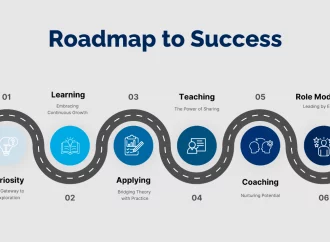Introduction Are you tired of slow internet speeds and limited access to online resources? If so, you’re not alone. Slow broadband connectivity is a persistent problem in many parts of the United States, leaving businesses and households at a disadvantage. But what if we told you that fixing America’s broadband infrastructure could be the key
Introduction
Are you tired of slow internet speeds and limited access to online resources? If so, you’re not alone. Slow broadband connectivity is a persistent problem in many parts of the United States, leaving businesses and households at a disadvantage. But what if we told you that fixing America’s broadband infrastructure could be the key to unlocking economic growth? In this blog post, we’ll explore how implementing a national broadband plan can help boost prosperity across the country. Get ready for some eye-opening insights!
The Importance of Broadband Infrastructure
Broadband infrastructure is critical for economic growth. High-speed internet access allows businesses to be more productive and efficient, and provides employees with the ability to telecommute. Good broadband infrastructure also supports distance learning and telemedicine initiatives, which can help reduce the cost of healthcare and education. A national broadband plan can help ensure that all Americans have access to high-speed internet, regardless of their income level or location.
The United States has lagged behind other developed countries in terms of broadband penetration. As of 2016, only about 75% of Americans had access to high-speed internet, compared to 95% in South Korea and Japan. This digital divide has serious implications for American businesses and workers. Businesses that are unable to get online are at a competitive disadvantage, and workers who don’t have high-speed internet at home are at a disadvantage when applying for jobs or trying to keep up with their field.
A national broadband plan would address these issues by making sure that all Americans have access to high-speed internet. Such a plan would be a major investment in our country’s future, and would pay dividends in terms of economic growth and productivity gains.
The Benefits of a National Broadband Plan
A national broadband plan can bring many benefits to the United States economy, including:
1. Increased economic productivity: A study by the McKinsey Global Institute found that countries with higher levels of broadband penetration enjoy higher levels of economic productivity. By making high-speed Internet access more widely available, a national broadband plan can help boost productivity and spur economic growth.
2. More job creation: A national broadband plan can also create jobs by stimulating demand for new products and services and spurring innovation. A study by the Progressive Policy Institute found that every one percent increase in broadband penetration generates approximately 100,000 new jobs.
3. Improved social welfare: Broadband can also help improve social welfare by providing access to education, health care, and other vital services. A study by the Brookings Institution found that households with broadband access are more likely to have higher incomes and be employed than those without it.
4. Greater civic engagement: Finally, a national broadband plan can promote greater civic engagement by making it easier for people to connect with their government and get involved in their communities.
How a National Broadband Plan Can Be Implemented
A national broadband plan can be implemented in a number of ways. One way would be for the government to invest in building and maintaining a nationwide high-speed broadband network. This would require a significant up-front investment, but could ultimately lead to lower costs for consumers and businesses, as well as increased competition in the broadband market.
Another way to implement a national broadband plan would be to provide subsidies or tax breaks to companies that build and operate high-speed networks. This could incentivize private companies to invest in broadband infrastructure, and help make high-speed Internet access more affordable for consumers and businesses.
There are a variety of other potential policies that could be used to implement a national broadband plan, including regulations on the provision of broadband services, standards for broadband quality, and funding for research and development of new broadband technologies. The best approach will likely vary from country to country, depending on the existing infrastructure, economic conditions, and political landscape.
Conclusion
In conclusion, a comprehensive national broadband plan is essential for the economic growth of the United States. It will ensure greater connectivity and access to resources that can be leveraged by businesses and citizens alike. This increased level of productivity and competition can have a positive impact on job creation, as well as innovation. With this in mind, it’s clear why investing in a National Broadband Plan should be viewed as an investment in both our economy now, and our future prosperity.





















Leave a Comment
Your email address will not be published. Required fields are marked with *